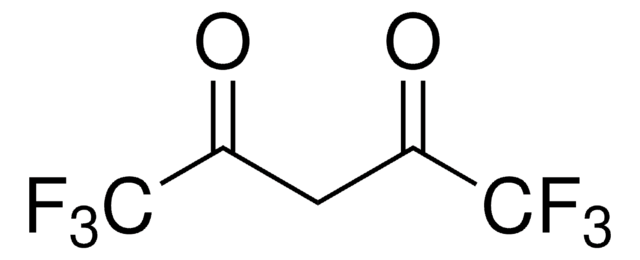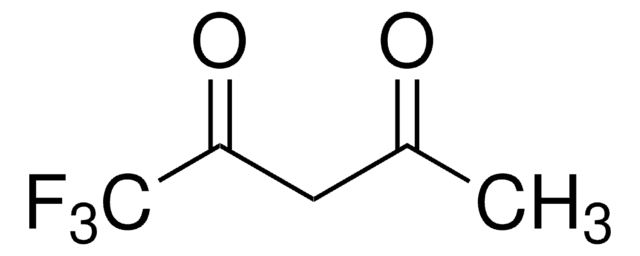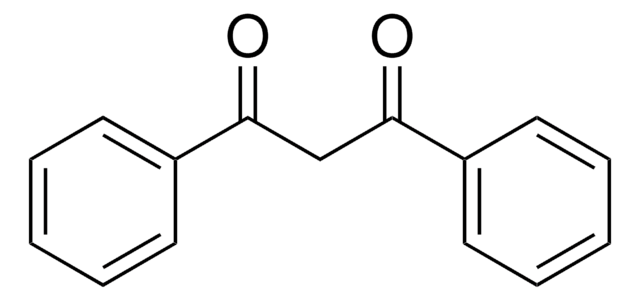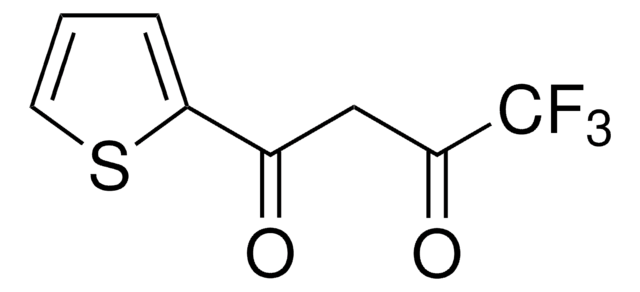155756
2,2,6,6-Tetramethyl-3,5-heptanedione
98%
Synonyme(s) :
Dipivaloylmethane
About This Item
Produits recommandés
Niveau de qualité
Pureté
98%
Forme
liquid
Indice de réfraction
n20/D 1.459 (lit.)
Point d'ébullition
72-73 °C/6 mmHg (lit.)
Densité
0.883 g/mL at 25 °C (lit.)
Groupe fonctionnel
ketone
Chaîne SMILES
CC(C)(C)C(=O)CC(=O)C(C)(C)C
InChI
1S/C11H20O2/c1-10(2,3)8(12)7-9(13)11(4,5)6/h7H2,1-6H3
Clé InChI
YRAJNWYBUCUFBD-UHFFFAOYSA-N
Vous recherchez des produits similaires ? Visite Guide de comparaison des produits
Description générale
2,2,6,6-Tetramethyl-3,5-heptanedioneis a stable, anhydrous reagent. It undergoes O-additions and C-additions. In various reactions, it acts as an air-stable ligand for metal catalysts. Furthermore, it serves as a substrate for heterocycles.
Application
2,2,6,6-Tetramethyl-3,5-heptanedione used as a ancillary ligand in the synthesis of orange-emitting iridium(III) complex.
Code de la classe de stockage
10 - Combustible liquids
Classe de danger pour l'eau (WGK)
WGK 1
Point d'éclair (°F)
152.6 °F - closed cup
Point d'éclair (°C)
67 °C - closed cup
Équipement de protection individuelle
Eyeshields, Faceshields, Gloves, type ABEK (EN14387) respirator filter
Faites votre choix parmi les versions les plus récentes :
Déjà en possession de ce produit ?
Retrouvez la documentation relative aux produits que vous avez récemment achetés dans la Bibliothèque de documents.
Les clients ont également consulté
Articles
Buchwald phosphine ligands for C-C, C-N, and C-O bond formation.
Notre équipe de scientifiques dispose d'une expérience dans tous les secteurs de la recherche, notamment en sciences de la vie, science des matériaux, synthèse chimique, chromatographie, analyse et dans de nombreux autres domaines..
Contacter notre Service technique








